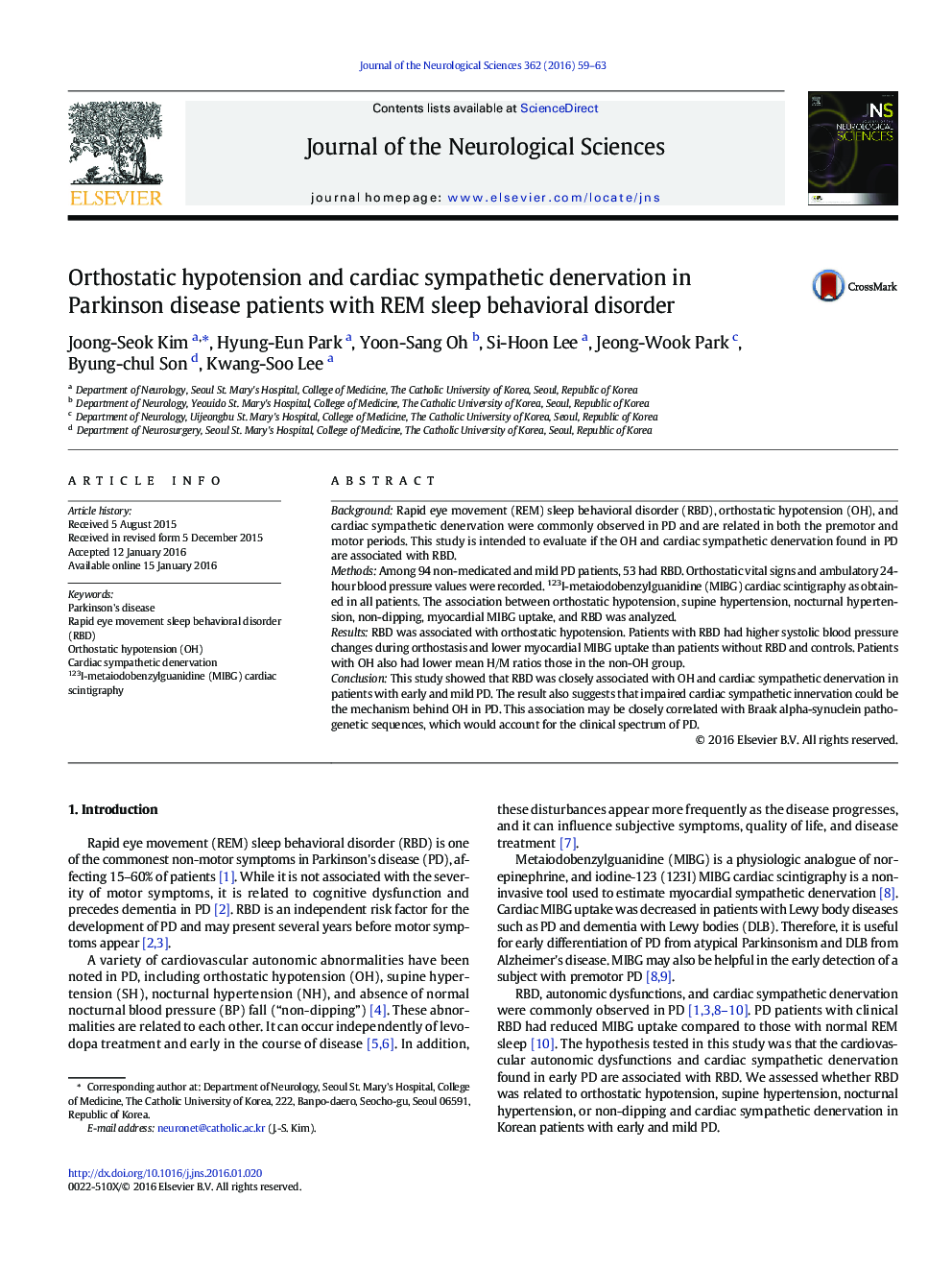| Article ID | Journal | Published Year | Pages | File Type |
|---|---|---|---|---|
| 1913042 | Journal of the Neurological Sciences | 2016 | 5 Pages |
•RBD is closely related to OH and cardiac sympathetic denervation in mild PD.•PD patients with OH also have decreased myocardial MIBG uptake.•OH may lead to hypoperfusion, which disturb normal neurotransmitter functions.•Impaired cardiac sympathetic innervation could be the mechanism behind OH.•This association may be closely correlated with Braak alpha-synuclein sequences.
BackgroundRapid eye movement (REM) sleep behavioral disorder (RBD), orthostatic hypotension (OH), and cardiac sympathetic denervation were commonly observed in PD and are related in both the premotor and motor periods. This study is intended to evaluate if the OH and cardiac sympathetic denervation found in PD are associated with RBD.MethodsAmong 94 non-medicated and mild PD patients, 53 had RBD. Orthostatic vital signs and ambulatory 24-hour blood pressure values were recorded. 123I-metaiodobenzylguanidine (MIBG) cardiac scintigraphy as obtained in all patients. The association between orthostatic hypotension, supine hypertension, nocturnal hypertension, non-dipping, myocardial MIBG uptake, and RBD was analyzed.ResultsRBD was associated with orthostatic hypotension. Patients with RBD had higher systolic blood pressure changes during orthostasis and lower myocardial MIBG uptake than patients without RBD and controls. Patients with OH also had lower mean H/M ratios those in the non-OH group.ConclusionThis study showed that RBD was closely associated with OH and cardiac sympathetic denervation in patients with early and mild PD. The result also suggests that impaired cardiac sympathetic innervation could be the mechanism behind OH in PD. This association may be closely correlated with Braak alpha-synuclein pathogenetic sequences, which would account for the clinical spectrum of PD.
